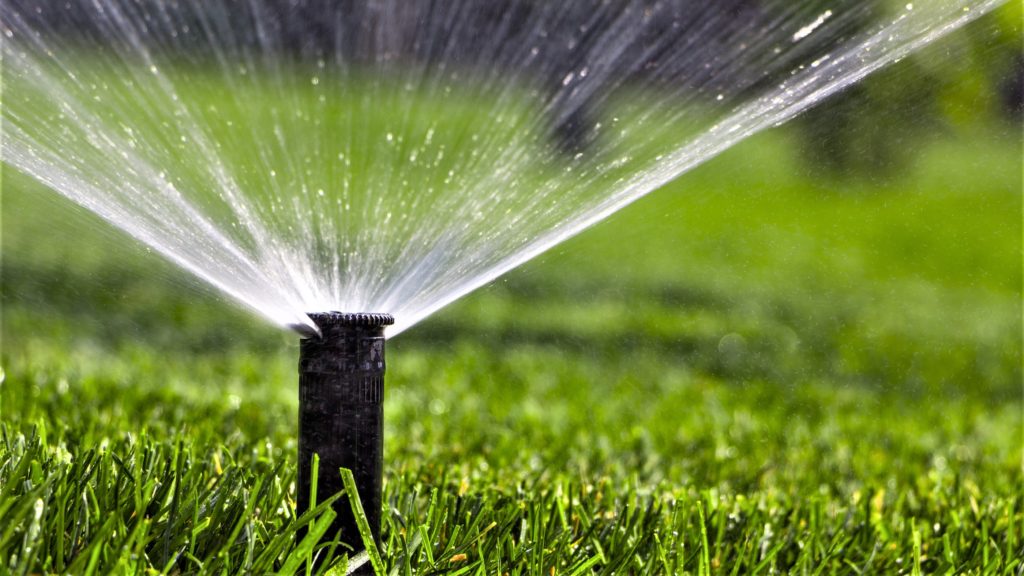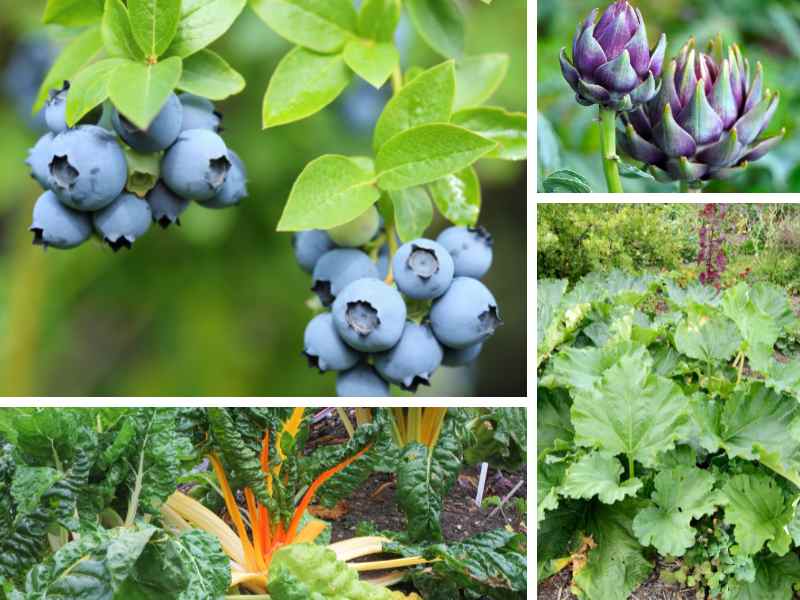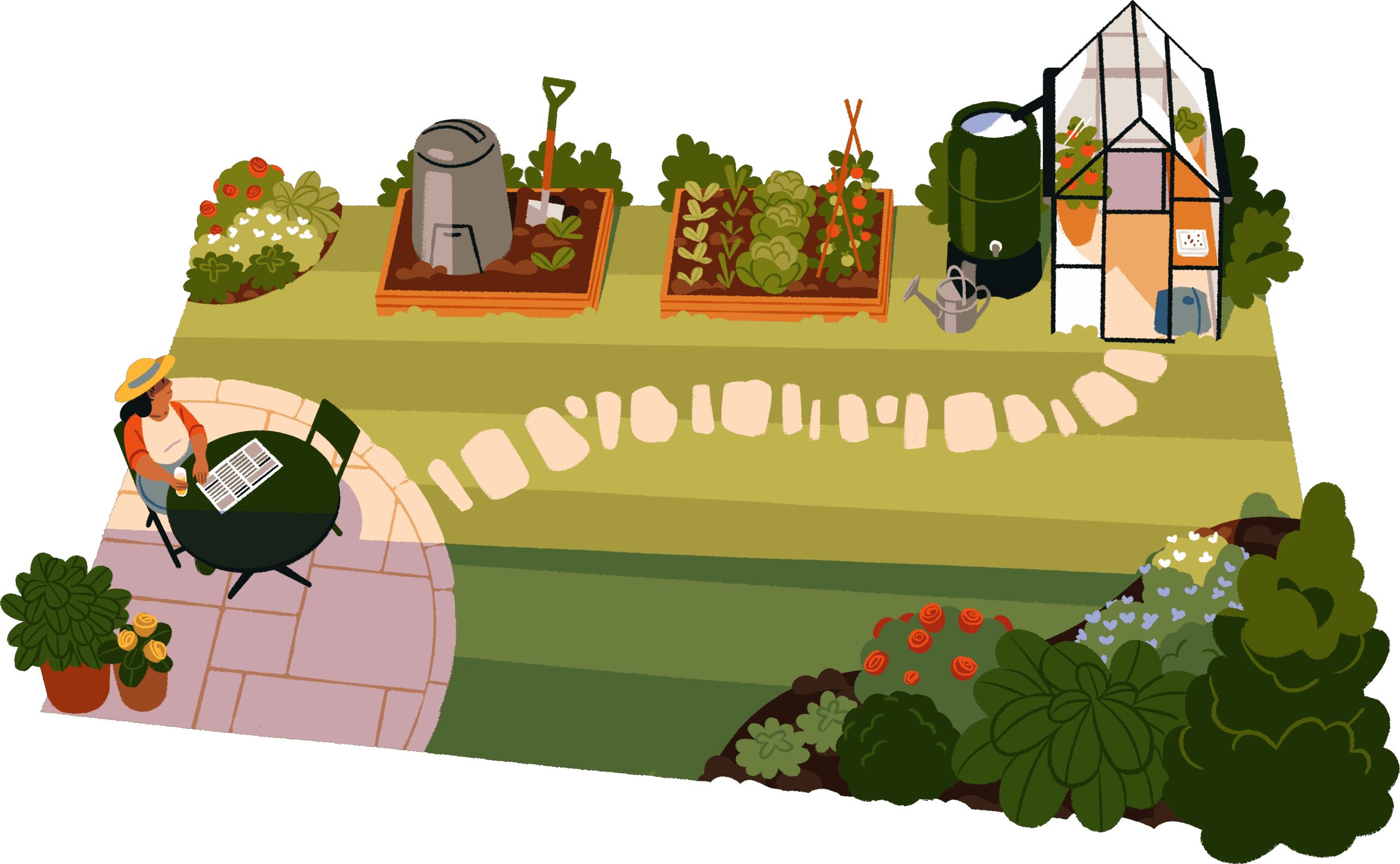
Introduction: The Urgent Need for Water-Efficient Irrigation
In a world increasingly grappling with water scarcity and the impacts of climate change, the efficient use of water in agriculture is no longer just a best practice – it’s a necessity. Traditional irrigation methods, often wasteful and environmentally damaging, are giving way to innovative water-efficient irrigation systems. These systems not only conserve precious water resources but also enhance crop yields, reduce operational costs, and contribute to a more sustainable agricultural future.
This comprehensive guide delves into the world of water-efficient irrigation, exploring various types of systems, their benefits, and how to choose the right system for your specific needs. We’ll also discuss best practices for implementation and maintenance, ensuring you get the most out of your investment while minimizing your environmental footprint. Whether you’re a small-scale farmer, a large agricultural enterprise, or simply interested in sustainable gardening, this guide will provide you with the knowledge and insights you need to make informed decisions about water management.
Understanding the Challenges of Traditional Irrigation
Before diving into the solutions, it’s crucial to understand the problems associated with traditional irrigation methods. Surface irrigation, such as flood irrigation and furrow irrigation, has been used for centuries. While simple in concept, these methods are notoriously inefficient. A large portion of the water is lost to evaporation, runoff, and uneven distribution, leading to both water waste and inconsistent crop growth.
Sprinkler systems, another common method, can also be inefficient, especially in windy conditions. Evaporation losses are significant, and the distribution of water can be uneven, resulting in some areas being overwatered while others are underwatered. Furthermore, traditional irrigation practices often contribute to soil erosion, nutrient leaching, and the salinization of agricultural lands, further exacerbating environmental challenges.
The Environmental and Economic Costs of Inefficient Irrigation
The environmental costs of inefficient irrigation are substantial. Over-extraction of water from rivers, lakes, and aquifers can lead to depletion of water resources, harming ecosystems and threatening biodiversity. The use of fertilizers and pesticides in conjunction with inefficient irrigation can also result in the contamination of water sources, posing risks to human health and the environment. Economically, inefficient irrigation translates to higher water bills, reduced crop yields, and increased costs for fertilizers and pesticides. It also contributes to the degradation of agricultural land, ultimately impacting long-term productivity.
Exploring Water-Efficient Irrigation Systems
Fortunately, a range of water-efficient irrigation systems are available, each offering unique advantages and tailored to different agricultural needs. These systems focus on delivering water directly to the plant roots, minimizing losses due to evaporation, runoff, and uneven distribution.
Drip Irrigation: Precision Watering for Optimal Growth
Drip irrigation, also known as micro-irrigation, is widely regarded as one of the most water-efficient irrigation methods available. It involves delivering water directly to the plant roots through a network of tubes, pipes, and emitters. The water is applied slowly and precisely, minimizing evaporation and runoff, and ensuring that plants receive the exact amount of water they need.
Benefits of Drip Irrigation:
- High Water Use Efficiency: Drip irrigation can achieve water use efficiencies of up to 90-95%, significantly higher than traditional methods.
- Reduced Water Waste: By delivering water directly to the plant roots, drip irrigation minimizes losses due to evaporation and runoff.
- Improved Crop Yields: Consistent and precise watering promotes optimal plant growth, leading to higher yields and better quality crops.
- Reduced Weed Growth: By keeping the soil surface dry, drip irrigation inhibits weed growth, reducing the need for herbicides.
- Fertigation Capabilities: Drip irrigation systems can be used to deliver fertilizers directly to the plant roots, improving nutrient uptake and reducing fertilizer waste.
- Suitable for Various Crops and Soil Types: Drip irrigation can be used for a wide range of crops, including fruits, vegetables, row crops, and ornamental plants. It is also suitable for various soil types, including sandy soils that have poor water-holding capacity.
Types of Drip Irrigation Systems:
- Inline Drip Irrigation: Emitters are pre-installed within the drip tubing at regular intervals.
- Online Drip Irrigation: Emitters are inserted into the drip tubing at specific locations based on the plant spacing.
- Subsurface Drip Irrigation (SDI): Drip tubing is buried below the soil surface, providing water directly to the root zone.
Micro-Sprinklers: Targeted Watering for Orchards and Vineyards
Micro-sprinklers are small, low-pressure sprinklers that deliver water in a localized spray pattern. They are commonly used in orchards, vineyards, and nurseries, where they provide targeted watering to individual plants or groups of plants.
Benefits of Micro-Sprinklers:
- Efficient Water Use: Micro-sprinklers offer better water use efficiency compared to traditional sprinkler systems, although not as high as drip irrigation.
- Targeted Watering: Micro-sprinklers deliver water directly to the plant canopy or root zone, minimizing water waste.
- Frost Protection: Micro-sprinklers can be used for frost protection by applying a thin layer of water to the plants, which freezes and releases heat, protecting the plants from damage.
- Cooling Effect: Micro-sprinklers can provide a cooling effect during hot weather, reducing plant stress and improving fruit quality.
- Easy Installation and Maintenance: Micro-sprinkler systems are relatively easy to install and maintain.
Types of Micro-Sprinklers:
- Spinner Sprinklers: Use a rotating spinner to distribute water in a circular pattern.
- Wobbler Sprinklers: Use a wobbling action to distribute water in a wide, gentle pattern.
- Fan Sprinklers: Distribute water in a fan-shaped pattern.
LEPA (Low Energy Precision Application) Irrigation: Minimizing Evaporation Losses
LEPA irrigation is a type of center pivot or lateral move irrigation system that uses drop tubes to deliver water close to the ground. This minimizes evaporation losses and ensures that water is applied directly to the crop canopy or soil surface.
Benefits of LEPA Irrigation:
- Reduced Evaporation Losses: By delivering water close to the ground, LEPA irrigation significantly reduces evaporation losses, especially in hot and windy conditions.
- Improved Water Use Efficiency: LEPA irrigation can achieve water use efficiencies comparable to drip irrigation in some situations.
- Reduced Wind Drift: The low-pressure application of water minimizes wind drift, ensuring that water is applied evenly across the field.
- Suitable for Row Crops: LEPA irrigation is particularly well-suited for row crops such as corn, soybeans, and cotton.
Surge Irrigation: Controlled Water Delivery for Furrow Irrigation
Surge irrigation is a modified form of furrow irrigation that involves applying water in intermittent surges rather than a continuous flow. This technique can improve water distribution and reduce water losses in furrow irrigation systems.
Benefits of Surge Irrigation:
- Improved Water Distribution: The intermittent surges of water help to wet the soil more evenly, reducing water losses due to deep percolation and runoff.
- Reduced Soil Erosion: Surge irrigation can reduce soil erosion by minimizing the force of the water flow.
- Increased Water Infiltration: The wetting and drying cycles of surge irrigation can improve water infiltration into the soil.
Choosing the Right Water-Efficient Irrigation System
Selecting the appropriate irrigation system is a critical decision that depends on a variety of factors. Careful consideration of these factors will ensure that the chosen system is both effective and efficient for your specific needs.
Factors to Consider When Choosing an Irrigation System
- Crop Type: Different crops have different water requirements and rooting depths. Drip irrigation is well-suited for crops that require frequent, precise watering, while micro-sprinklers are often used for orchards and vineyards. LEPA irrigation is commonly used for row crops.
- Soil Type: Soil type affects water infiltration and water-holding capacity. Sandy soils require more frequent irrigation with smaller amounts of water, while clay soils can hold more water and require less frequent irrigation.
- Topography: The slope and contour of the land can affect water distribution. Drip irrigation and micro-sprinklers are generally well-suited for uneven terrain, while surge irrigation may be more appropriate for relatively flat land.
- Water Source and Quality: The availability and quality of water are important considerations. Drip irrigation systems require clean water to prevent clogging of the emitters. Water with high salinity or sediment content may require pretreatment before being used in irrigation systems.
- Climate: Climate factors such as temperature, humidity, and wind speed can affect water losses due to evaporation. LEPA irrigation is particularly well-suited for hot and windy climates.
- Cost: The initial cost of the irrigation system, as well as ongoing operating and maintenance costs, should be considered. Drip irrigation systems can be more expensive to install than traditional sprinkler systems, but they can offer significant long-term savings due to reduced water and energy consumption.
- Labor Requirements: Some irrigation systems require more labor than others. Drip irrigation systems, for example, may require more frequent monitoring and maintenance than traditional sprinkler systems.
Comparing the Different Systems: A Decision Matrix
To simplify the decision-making process, consider creating a decision matrix that compares the different irrigation systems based on the factors listed above. Assign weights to each factor based on its importance to your specific situation, and then score each irrigation system based on its performance for each factor. The system with the highest overall score is likely the best choice for your needs.
Implementing and Maintaining Water-Efficient Irrigation Systems
Proper implementation and maintenance are essential for ensuring the long-term performance and efficiency of water-efficient irrigation systems. Following best practices for installation, operation, and maintenance will help you maximize your investment and minimize water waste.
Installation Best Practices
- Proper Design: A well-designed irrigation system is crucial for ensuring uniform water distribution and minimizing water losses. Consult with a qualified irrigation designer to develop a system that is tailored to your specific needs.
- Correct Installation: Follow the manufacturer’s instructions carefully when installing the irrigation system. Ensure that all components are properly connected and that the system is properly pressurized.
- Flushing the System: Before using the irrigation system for the first time, flush the system thoroughly to remove any debris or contaminants that may be present.
Operation Best Practices
- Regular Monitoring: Regularly monitor the irrigation system to ensure that it is operating properly. Check for leaks, clogs, and other problems that could affect water distribution.
- Adjusting Irrigation Schedules: Adjust irrigation schedules based on weather conditions and crop water requirements. Use soil moisture sensors or evapotranspiration data to determine when and how much to irrigate.
- Proper Pressure Regulation: Ensure that the irrigation system is operating at the correct pressure. Too much pressure can lead to excessive water losses, while too little pressure can result in uneven water distribution.
- Fertigation Management: If using fertigation, carefully manage the application of fertilizers to avoid over-fertilization or nutrient imbalances.
Maintenance Best Practices
- Regular Cleaning: Regularly clean the irrigation system to remove any debris or contaminants that could clog the emitters or nozzles.
- Filter Maintenance: Clean or replace filters regularly to prevent clogging of the irrigation system.
- Emitter Maintenance: Inspect emitters regularly for damage or clogging. Replace damaged or clogged emitters as needed.
- Leak Detection and Repair: Regularly inspect the irrigation system for leaks and repair any leaks promptly.
- Winterization: In cold climates, winterize the irrigation system to prevent damage from freezing temperatures.
The Role of Technology in Water-Efficient Irrigation
Advancements in technology are playing an increasingly important role in water-efficient irrigation. Smart irrigation controllers, soil moisture sensors, and remote monitoring systems are helping farmers and growers optimize water use and improve crop yields.
Smart Irrigation Controllers: Automating Water Management
Smart irrigation controllers use weather data, soil moisture sensors, and plant water requirements to automatically adjust irrigation schedules. These controllers can significantly reduce water waste and improve crop yields by delivering water only when and where it is needed.
Soil Moisture Sensors: Measuring Water Availability
Soil moisture sensors measure the amount of water available in the soil. This information can be used to determine when and how much to irrigate, ensuring that plants receive the optimal amount of water. There are various types of soil moisture sensors available, including:
- Tensiometers: Measure the tension of water in the soil.
- Electrical Resistance Sensors: Measure the electrical resistance of the soil, which is related to the water content.
- Capacitance Sensors: Measure the dielectric constant of the soil, which is related to the water content.
Remote Monitoring Systems: Real-Time Data and Control
Remote monitoring systems allow farmers and growers to monitor their irrigation systems remotely using smartphones, tablets, or computers. These systems provide real-time data on water pressure, flow rates, and soil moisture levels, allowing users to quickly identify and address any problems that may arise.
Government Incentives and Support for Water-Efficient Irrigation
Many governments and organizations offer incentives and support for the adoption of water-efficient irrigation systems. These incentives may include grants, loans, tax credits, and technical assistance.
Exploring Available Programs
Research available programs in your area to determine if you are eligible for any financial assistance or technical support. Contact your local agricultural extension office or water conservation district for more information.
Navigating the Application Process
The application process for government incentives can be complex. Be sure to carefully review the eligibility requirements and application procedures. Gather all necessary documentation and submit your application on time.
Case Studies: Success Stories in Water-Efficient Irrigation
Numerous case studies demonstrate the effectiveness of water-efficient irrigation systems in various agricultural settings. These success stories highlight the benefits of adopting these technologies and provide valuable insights for others considering making the switch.
Real-World Examples of Improved Water Use
Share examples of farmers and growers who have successfully implemented water-efficient irrigation systems and achieved significant reductions in water use. Highlight the specific technologies they used and the strategies they employed.
Quantifiable Results: Yield Increases and Cost Savings
Present quantifiable data on the yield increases and cost savings that have been achieved through the adoption of water-efficient irrigation systems. This data will help to demonstrate the economic benefits of these technologies.
Addressing Common Concerns and Misconceptions
Some farmers and growers may have concerns or misconceptions about water-efficient irrigation systems. Addressing these concerns and dispelling these misconceptions can help to encourage wider adoption of these technologies.
Cost Considerations: Long-Term vs. Short-Term
Address the perception that water-efficient irrigation systems are too expensive. Explain that while the initial cost may be higher than traditional methods, the long-term savings in water, energy, and labor can often offset the initial investment.
Maintenance Requirements: Ensuring System Longevity
Address concerns about the maintenance requirements of water-efficient irrigation systems. Explain that while these systems do require regular maintenance, the benefits of improved water use efficiency and crop yields outweigh the maintenance costs.
Compatibility with Existing Infrastructure
Address concerns about the compatibility of water-efficient irrigation systems with existing infrastructure. Explain that many of these systems can be easily integrated into existing irrigation systems with minimal modifications.
The Future of Water-Efficient Irrigation: Innovations and Trends
The field of water-efficient irrigation is constantly evolving, with new innovations and trends emerging all the time. Staying abreast of these developments can help you make informed decisions about your irrigation practices.
Emerging Technologies and Techniques
Discuss emerging technologies and techniques in water-efficient irrigation, such as:
- Precision Irrigation: Using sensors and data analytics to deliver water to plants with even greater precision.
- Subsurface Drip Irrigation (SDI): Burying drip tubing below the soil surface to further reduce evaporation losses.
- Variable Rate Irrigation (VRI): Adjusting irrigation rates based on the specific needs of different areas within a field.
The Role of Data and Analytics
Highlight the growing role of data and analytics in water-efficient irrigation. Explain how data can be used to optimize irrigation schedules, predict crop water requirements, and identify potential problems with irrigation systems.
Conclusion: Embracing a Sustainable Approach to Irrigation
Water-efficient irrigation systems are essential for ensuring the sustainability of agriculture in a world facing increasing water scarcity. By adopting these technologies and following best practices for implementation and maintenance, farmers and growers can conserve precious water resources, improve crop yields, and contribute to a more sustainable future. The transition to water-efficient irrigation is not just an investment in technology; it’s an investment in the future of our planet.



